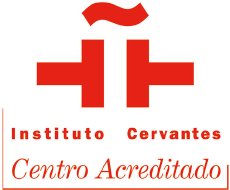THE ARTICLE
The article defines a noun, that coincides with it in genre and number. Spanish, even if the neutral does not exist, has brought (from the Latin) the neutral form “LO” in the article. it is used to use as a noun the adjectives.
THE DEFINITE ARTICLE:
- El
- Lo
- La
- Los
- Las
Often the contract form is used:
- al: a+el: a elcoche: al coche
- del: de+el: del amigo de Juan
Examples:
Al final, nos fuimos a pasear
Al fondo de la calle esta el bar
Al cabo de un rato se fue
Me gusta la comida del chino
¿A qué hora vendrás del fútbol?
Los colores del edificio aquel son preciosos
Nos vemos esta tarde después del trabajo
THE INDEFINITE ARTICLE:
- Un
- Una
- Unos
- Unas
Examples:
Mañana haré una fiesta de disfraces
Una canción de amor
Ayer hicimos una excursión a la montaña
Quiero un helado con dos bolas de chocolate
En unos días acabo el trabajo
The Spanish language includes articles: EL with its morphological variations (la, los, las) and the article UN and its variations (una, unos, unas). A neutral article exists, that is “LO“, it can substitute EL but its meaning it is not the same: : “lo bueno de Juan” alludes to a quality of Juan, but it does not qualify him. On the contrary, “el bueno de Juan” caracterizes him. for this reason we can say: “lo bueno de la situación” but not “el bueno de la situación”.
In Spanish we use EL when we talk about something the listener knows. “tráeme los platos”. if we have said “tráeme unos platos”, the listener does not know which plate we are referring to. So, the difference between EL and UN is that EL is used to identify an element out of a group. For this reason, in Spanish, the proper names have not the article: vino Luisa, estuve en Valencia, me encanta París. on the other hand, UN is used to talk about an element of the group: “estaba hablando con un ministro.”
THE ARTICLE “LO”:
LO has three significant values in Spanish:
- qualitative value: ¡lo listo que es Juan!
- quantitative value: tu hijo no estudia lo suficiente
- abstract value: lo dulce, lo bonito, lo bueno
In spanish the substantivation is produced when the article is added to the adjective: el grande, la pequeña, la verde.



















